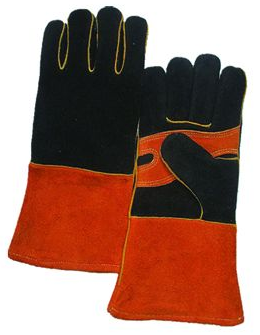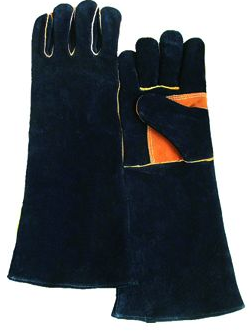When it comes to welding, ensuring the safety and protection of your hands is crucial. Welding gloves are an essential part of personal protective equipment (PPE) for welders. They are designed to shield your hands from heat, sparks, electrical shock, and other hazards associated with welding. Two popular types of welding processes are TIG (Tungsten Inert Gas) welding and MIG (Metal Inert Gas) welding, and each process has its own specific requirements. In this article, we will compare TIG and MIG welding and discuss the welding gloves suited for each process.
TIG Welding:
TIG welding is a precise welding process that utilizes a non-consumable tungsten electrode to create the weld. It is commonly used for welding thin metals such as stainless steel, aluminum, and copper alloys. TIG welding requires a high level of skill and control, as it produces a concentrated and intense arc. Here are some considerations when choosing welding gloves for TIG welding:
Dexterity and Sensitivity:
TIG welding requires excellent dexterity and sensitivity to handle the torch and control the welding puddle. The gloves used for TIG welding are typically thinner and more flexible than those used for other welding processes. They provide a better feel and allow for precise movements, ensuring welders have a good grip on the torch and can maneuver it accurately. Look for gloves made from materials like goatskin or deerskin, as they offer great dexterity and tactile feedback.

Heat Resistance:
While TIG welding produces less spatter and heat compared to other welding processes, there is still a need for heat resistance in welding gloves. The gloves should provide sufficient protection against the heat generated by the welding arc and the hot workpiece. Look for gloves with heat-resistant properties, such as heat-resistant lining or Kevlar stitching, to protect your hands from burns.
Finger Control:
Since TIG welding requires precise control of the welding arc, gloves with enhanced finger control are beneficial. Some TIG welding gloves have reinforced or padded areas in specific finger locations to improve grip and protect against heat. These features allow welders to maintain control while reducing hand fatigue during prolonged welding sessions.
MIG Welding:
MIG welding, also known as wire welding, is a popular welding process that uses a consumable wire electrode and an inert gas to protect the weld from atmospheric contamination. It is commonly used for welding thicker materials and is suitable for a variety of metals. Here are some considerations when choosing welding gloves for MIG welding:

Heat and Spatter Protection:
MIG welding generates more heat and produces more spatter compared to TIG welding. As a result, MIG welding gloves require better heat resistance and spatter protection. Look for gloves made from thick and durable materials like split cowhide or pigskin, as they provide excellent heat resistance and spatter protection. The gloves should cover the wrists and have a cuff that extends beyond the sleeve of the welding jacket for added protection.
Durability and Longevity:
MIG welding involves longer welds and higher amperage, which can lead to increased wear and tear on welding gloves. Therefore, durability and longevity are important factors to consider. Look for gloves with reinforced palms and fingers to withstand the constant movement and abrasion associated with MIG welding. Double stitching and leather reinforcements in high-wear areas enhance the glove's lifespan.
Comfort and Insulation:
MIG welding gloves should provide a balance between heat protection and comfort. While they need to be thick enough to handle the heat, they should still offer comfort and flexibility to minimize hand fatigue. Look for gloves with soft linings, padded palms, and ergonomic designs that provide comfort and insulation.







